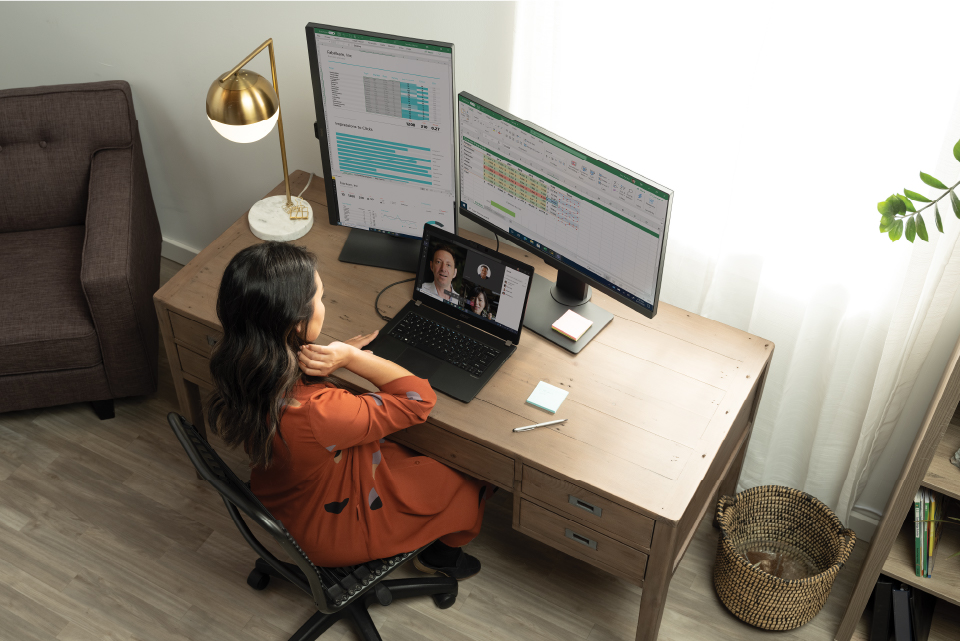By Rajiv Sodhi, Chief Operating Officer, Microsoft India
 With the move to hybrid work, we’re on the brink of a disruption. Organizations are fast adopting a blended operating model with some employees returning to the workplace and others continuing to work from home. At the same time, it is also emerging that there is no universal approach to hybrid work. Every organization will need to adapt differently to access and deliver the needs of their employees. Employees are keen on flexible remote work options, but they also crave for more in-person collaboration. And this is the hybrid work paradox that we need to address urgently.
With the move to hybrid work, we’re on the brink of a disruption. Organizations are fast adopting a blended operating model with some employees returning to the workplace and others continuing to work from home. At the same time, it is also emerging that there is no universal approach to hybrid work. Every organization will need to adapt differently to access and deliver the needs of their employees. Employees are keen on flexible remote work options, but they also crave for more in-person collaboration. And this is the hybrid work paradox that we need to address urgently.
Every organization wants to empower people for a world of work that is dynamic, fluid, and cloud-powered. They want to find ways for people to work not just from anywhere but at any time, with solutions that allow both synchronous and asynchronous collaboration. And it’s a ‘whole organization’ shift —this is a conversation that requires leaders across the entire organization to come together to rethink work. Our Work Trend Index research indicates that almost 62% of India’s workforce (including 51% of Gen Z employees) want to switch jobs this year. An organization’s approach to hybrid work will ultimately impact who stays, who goes, and who seeks to join the company.
The choices an organization now makes will impact it for years to come. It’s a moment that requires a clear vision. Organizations need a plan and policies that put them on the path to extreme flexibility. These decisions will impact everything from how they shape culture to how they attract and retain talent to how respond to changes in the environment to future innovation.
The future of work is hybrid
We remain committed to delivering experiences that anticipate the different ways teams need to work together while providing the flexibility and agility we now require – across people, places and processes. We’re giving employees a clear flexible work policy—any employee can work remotely up to 50 percent of the time. We’re also building privacy-backed listening systems to capture digital signals with tools including Workplace Analytics, part of Viva Insights, which lets managers and leaders check in on the wellbeing of their teams and organizations empowering managers and leaders to “hire talent from everywhere” and create their own team norms.
Our approach to places hinges on bridging the gap between the physical and digital, and evolving with employee needs. It starts with prioritizing employee safety. Our Return to Workplace solution is becoming a hub for coordinating across people, places, and processes for hybrid work. Our aim is to maintain consistent person, reference, and task spaces for all employees, whether they are on-site or remote. Creating equitable, inclusive experiences starts with designing for people not in the room. By combining new design patterns with Microsoft Teams Rooms innovations, we’re giving everyone a seat at the table so they can fully participate, no matter where they are.
Every business process will need to be transformed in the shift to hybrid work, and so we’re also taking the opportunity to reimagine our key business processes—from operations to sales. We’re transforming our inside sales team; using Microsoft Power Platform—Power Automate, Power BI, and Power Apps—to automate order-to-cash; and investing in a centralized Global Demand Center to increase lead gen and customer engagement through automated digital marketing.
Reimagine the employee experience
It is also critical to include technology that enables teamwork and creates a new digital employee experience that follows employees no matter where they go. To that end, we’re supporting the hybrid work evolution through innovations within our technology tools to help people navigate these new environments. With Microsoft Teams, we are bringing together chat, calling, meetings and collaboration into one hub for teamwork. Because it is built on Microsoft 365, users benefit from built-in integration with innovative Office apps, intelligent cloud services and world-class security, providing an extensible and customizable experience to fit the needs of every team.
With our hybrid workplace model, we are providing employees an exceptional place to work, create greater collaboration and community, and showcase an example of the modern workplace that is both flexible and hybrid. The next phase will bring challenges and opportunities, but we’re optimistic about the future. If we take what we’ve learned from overcoming a once-in-a-hundred-year challenge and use it to chart a path forward that gives people the flexibility they need, together we can build a better world of work for everyone.
For learnings that can help your organization navigate these evolving work norms, you can download the Hybrid Work: A Guide for Business Leaders.







